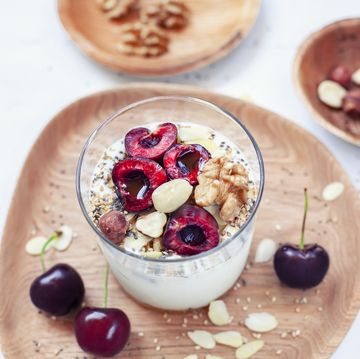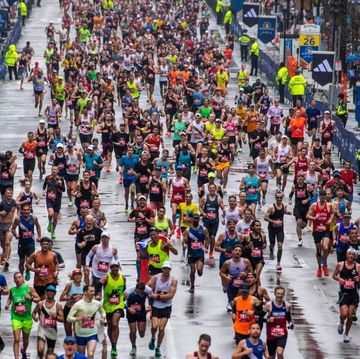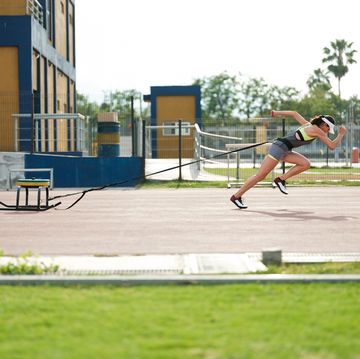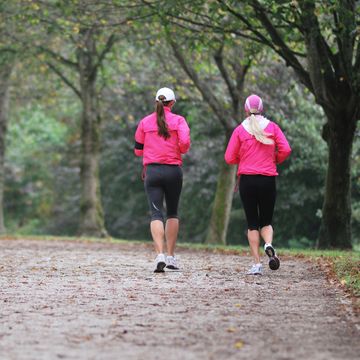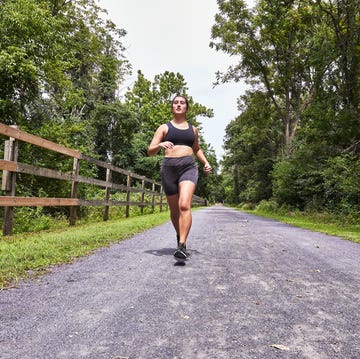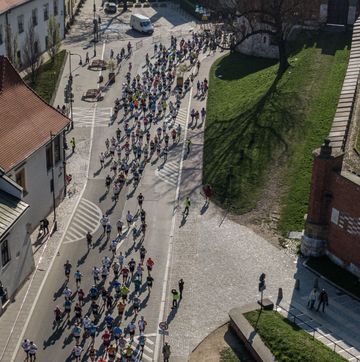Can a part-time runner from the Minneapolis suburbs, who plays soccer in the fall and wrestles in the winter, become a contender for two national cross country titles this fall?
His name is Obsa Ali, and he’s a 17-year-old senior at Richfield (Minn.) High. He came to the United States from Ethiopia five years ago, at age 12. Ali did no running in his native land other than during pick-up soccer games, although he was aware of the great Ethiopian runners and recalled seeing Kenenisa Bekele set the world 10,000m record on television.
Ali, a 17-year-old senior, had never considered running himself. He spoke little English when he settled in Minnesota with his mother and two younger brothers, born in the U.S. His mother, Hadia Borou, had come to the U.S. for a better life when Ali was 2. Ali stayed behind, living with his maternal grandmother for ten years in Dire Dawa, a city in eastern Ethiopia situated at 5,600 feet. Ali’s mother sent money home for Ali’s schooling.
Immigration delays prevented Ali from joining his mother. Finally, the details fell into place and in 2008 Ali started his new life in Minnesota. But soon after he arrived Ali was despondent and wanted to go back home.
“Without the language,” said Ali, “it was hard making friends.”
It took Ali three years to become comfortable with English. It took him less time to get comfortable with running. After achieving a 10:03 3200m with no base in freshman track, Ali clocked a pair of 9:18s as a sophomore (still with a marginal base) and then ran 8:57.07 in a brilliant state meet victory this past spring. He added a third-place 4:10.91 in the 1600m.
In what has become a pattern of runners making dramatic improvements after switching from other sports, Ali can now say with all seriousness, “I’m still getting used to running. It happened out of nowhere.”
Few runners nationwide have Ali’s track credentials. And while fewer still could match Ali in cross country—he placed 10th at Nike Cross Nationals (NXN) last December after piecemeal training—he is virtually unknown outside of Minnesota. The Richfield coach, Marty Huberty, had to push for Ali to be accepted into the midsummer Nike Elite Camp for top high school runners in Beaverton, Ore.
At the camp, Ali will likely meet some of his NXN opposition for this fall. The elite high school attendees will be given the full Nike menu of the latest in training concepts. But with all the high-tech wizardry that Ali will be exposed to, it won’t stand up to coach Huberty’s secret weapon—the Richfield boogie-woogie.
The boogie-woogie is part motivation and part speed test. It comes at the end of repeat 800s, Huberty’s go-to track workout. Last spring Minnesota’s endless winter kept the school track iced over into April, so Huberty went to the roads.
Huberty, who coaches girls as well as boys, has the team run the first 400 of an 800 at 75 percent effort, the next 200 at 65 percent, and the last 200 at 90 percent with aggressive arm action. To spur on the athletes, Huberty shouts, “Let’s boogie-woogie to the finish.” He wants the team working the last 200 like it is a race and they are grinding to pass opponents on the home straight.
That goal came off gloriously in the state finals for Ali, whose 800 workouts consisted of 10 to 12 reps with a 2-minute rest and closing 200s in under 28 seconds. In the 3200m, Huberty instructed Ali to sit in second until the final 200. The race had four different leaders. No matter: Ali sat in second. Then with 200 to go, he blew by Joey Duerr, a Chaska sophomore, for the victory. Ali’s last lap was 56 seconds.
Ali’s time goal was sub-9:00 and he achieved that with room to spare, setting a state meet record. A freshman, Eli Krahn, of state distance power Stillwater, rallied for second in 8:58.67 with Duerr third in 8:59.03. With all three youngsters returning this fall, Minnesota should have quite a trio of boys in contention for national honors.
The upcoming cross country season will offer new excitement for Ali. He has all but decided to drop soccer and concentrate on running. Considering his limited training so far, Ali and Huberty feel he can qualify for both the NXN and Foot Locker nationals, and then be a contender in both.
The NXN Heartland Regional and Foot Locker Midwest are on separate weekends, making the double possible. As always for the nationals, NXN and Foot Locker (in San Diego) are on successive weekends—this year Dec. 7 and Dec. 14, respectively. Ali can draw upon the experience of last year’s Heartland winner Jake Leingang of North Dakota (now starting his college career at Oregon), who made both nationals the last two years.
And Leingang had a lot more training under his belt. Last summer, knowing soccer would be his priority, Ali did little running. In the fall, after soccer practice (but not on game days), he would meet Huberty for a cross country workout, usually three times a week. Ali did few races but in one early-season stretch, he ran two races and played an overtime soccer match within 96 hours. He took second in one race. In the other, he vomited at 2 miles and won by almost a minute. In soccer, he suffered a cleat wound.
The part-time runner burned the candle on both ends until mid-October, when soccer ended. (Richfield was eliminated early in the playoffs.) Then, Ali did normal training, but still modest, about 35 miles a week. It was Ali’s first cross country season. He went on to take second in state 2A and third in the NXN Heartland Regional (15 seconds behind Leingang), qualifying for nationals.
When Ali came across the Heartland finish, he had mixed emotions. He was thrilled to qualify but said, “I thought I’d have to pay for it. I didn’t know Nike paid for everything until a couple of the other guys told me.”
Ali said that he enjoyed running in the NXN mud at Portland. His 10th-place finish put him 24 seconds behind victorious Sam Wharton of Ohio. Other than Ali, the only other returning top 10 finishers for 2013 are runner-up Estevan De La Rosa, who led team champion Arcadia of California, and fourth-place Joe Hardy of Seattle Prep, the Northwest Regional winner. Foot Locker was also senior-heavy. Only one top 10 runner, seventh-place Aaron Templeton of Tennessee, comes back.
Last year after NXN, Ali went right into wrestling and did not run a step all winter. Huberty had told Ali to put running on the shelf while he wrestled. They both felt the conditioning for wrestling would pay dividends in the spring and that no leg-pounding for three months was a healthy idea. Huberty attended Ali’s matches to cheer him on.
Something in Huberty’s personality must have clicked with Ali. Maybe it was the fact that Huberty, 48, was a special needs teacher who knew how to read students. Or maybe it was that Huberty had run 78 marathons and knew what he was talking about. The running hiatus worked out fine. Ali excelled in wrestling, as he had in soccer. Competing in the 112–115 pound weight class, Ali placed third in regionals, one place shy of making the state finals.
Still, Ali had some catching up to do in track, and in a matter of weeks he was running 9:16 and then 9:10 for 3200m, plus some 51-second anchor legs on the Spartans’ 4 x 400m relay.
Huberty expected it. “I tell the kids that 90 percent of running comes from your heart,” he said. “Obsa has a huge heart.”
This fall, the still-not-ready-to-be-fulltime runner (he expects to continue wrestling as a senior) will bring 50 miles a week of summer work into his second cross country season. It’s a season in which Ali could be the national front-runner. But who will the opposition be?
Go deeper into the NXN results and you’ll find that only a handful of the top 25 boys will be back. De La Rosa, the 2012 runner-up, finds his team in flux after the controversial firing of Arcadia coach Jim O’Brien. Hardy, the Seattle star, was suspended from his track team last spring. And only 11 finalists from the entire Foot Locker field of 40 return.
Perhaps Ali’s prime opposition will come from another West Coast runner, Californian Blake Haney of Stockdale High, who was injured in cross country last fall. Haney recovered to run brilliant track times of 4:06.91 for 1600m and 8:48.58 for 3200m en route to making the World Youth Games final this summer in the 1500m, where he placed fifth in Donetsk, Ukraine, in 3:44.69, the equivalent of a 4:02 mile.
Ali was so confident about this fall’s nationals—confident not cocky, said Huberty—that he has already told Huberty “to make sure we’ll have trips to Portland and San Diego in December.” Ali also expects to make college visits this fall. For a kid of modest means who spoke no English, had no friends and yearned for his Ethiopian homeland, Ali still marvels over whatever his out-of-nowhere running brings him. “I get to choose my college,” he said. “Pretty cool.”
But in college he will not get to choose his sport. No soccer. No wrestling, and no struggle to make weight. While Ali, 5-foot-8, wrestled at 115 pounds, he runs at a robust 120 to 125.
With all his immediate opportunities, Ali took the long view when asked what he has learned most from his Richfield experience and coach Huberty. “He tells me, it doesn’t matter whether you’re fast or slow, running is for the rest of your life.”
Not to mention the boogie-woogie.

Marc Bloom’s high school cross-country rankings have played an influential role in the sport for more than 20 years and led to the creation of many major events, including Nike Cross Nationals and the Great American Cross Country Festival. He published his cross-country journal, Harrier, for more than two decades.



